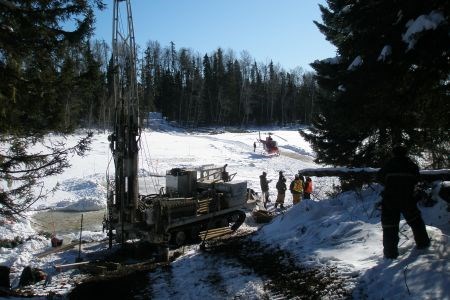Optimism is running high that the Thunder Bay district will develop into a cluster of major mining camps.
But finding the talent to run these future operations has many companies scrambling to fill the ranks.
A mining labour report listing potential job opportunities in the mineral industry in northwestern Ontario was released Feb. 15 in Thunder Bay.
The report was a collaboration between the North Superior Workforce Planning Board and the Mining Industry Human Resources Council.
The much-anticipated document was presented as part of a larger trade show showcasing career opportunities and the mining activities in the region.
“We've piqued a lot of interest,” said Madge Richardson, the training board's executive director.
Richardson said more than 40 mining and supply companies were interviewed in Thunder Bay, across the northwest, and in the James Bay Ring of Fire.
The intent was to gauge what their workforce needs were over a 10-year span and what recruitment plans they have in place. The report was funded by the Ministry of Training, Colleges and Universities.
“There's so much talk, speculation and interest because of the Ring of Fire,” said Richardson, “but when you start looking at the region, it's only a small portion of what's really going on in mining and mineral exploration.”
All of the employers interviewed expect “significant pressure” to be felt in the region as advanced exploration work moves into production.
The report said the region’s already-tight labour market is characterized by a “very high demand” in finding workers with the right skill sets.
As developments in the Ring of Fire unfold, that demand will outstrip future supply.
Two businesses indicated that their operations were unable to fill all the positions available because of a lack of qualified labour.
A key finding was the high degree of labour mobility in the region. Because the global mining industry is so robust, employers are in a fight to attract top-flight engineers, skilled trades and experienced drillers.
The employers interviewed expect two to five new mines to open in the region over the next five years, and of the more than 300 exploration projects now underway, they said five to eight should become mines by decade’s end.
Depending on whether the economic outlook is volatile or is in full growth mode, the mining industry in the Thunder Bay district will require between 1,110 and 4,150 workers over the next 10 years.
A mid-range estimate indicates the greatest need is in the trades and labour occupations. About 2,840 people will be needed in extraction and production positions.
There will be 895 people required for “undesignated occupations” such as janitors, administration, accountants, nurses and in health care.
About 220 supervisors, coordinators and foreman need to be recruited, but the most difficult positions will be finding 150 technicians whose expertise makes them very mobile operators.
“This makes attracting and retaining them difficult and resource intensive,” the report stated.
To lessen the impact of the aging workforce, some companies have resorted to job sharing between older and younger workers, mentorship programs and some are keeping retirees around as consultants.
Companies had varying responses to their attempts to integrate Aboriginal people into their workforce. Some reported “no success while others experience significant success.”
The biggest challenge is the skills gap between what the individuals possessed and what was required for the industry.
Some companies have done their own internal training, but for smaller firms, it was beyond their means and they're looking to the government and educators for help.
The report suggests employers should also look to attract immigrant talent from the large cities and find ways to get more women into the industry.
One possible approach to growing the local talent pool is to find more flexible and innovative ways to train new workers faster without compromising quality.
The report said industry must be more active on educational task forces, planning boards and committees, and must communicate better with educators in taking “longer planning horizons” to anticipate their future needs.




